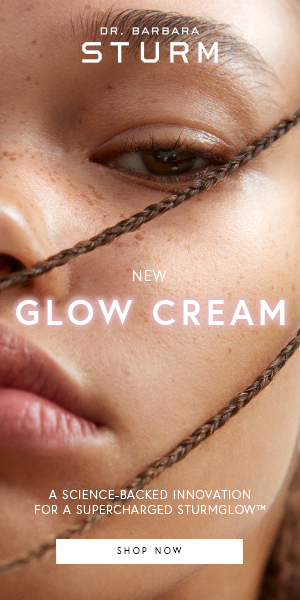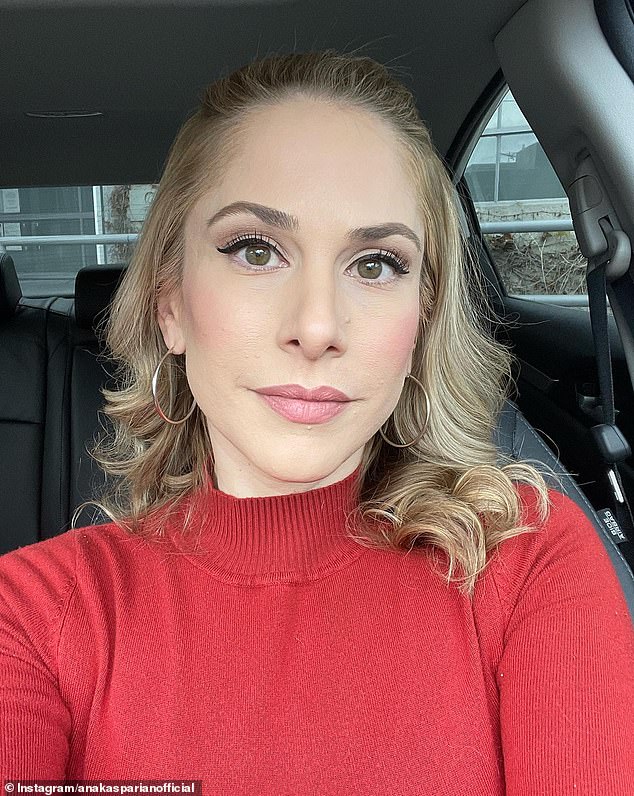Royale journalists select and curate the products that feature on our site. If you make a purchase via links on this page we will earn commission – learn more
Grey hairs and fine lines are one thing, but a stubborn little strand starting to poke its way out of your chin? That’s a symptom of ageing few of us are happy to accept.
Of course, female facial hair isn’t always related to age – while hormonal changes during the menopause can prompt its appearance, women who suffer from Polycystic Ovary Syndrome (PCOS) or other hormone-related conditions can also find those pesky hairs plaguing them at any age.
There are two types of hair that can grow on your face, explains skin expert and Fierce Face founder Henrietta Chaplin. ‘Vellus hair is the thin, fine, fluffy hair,’ she says, while ‘terminal hair is thicker and darker, such as eyebrows.’
Of course, when that terminal hair starts to sprout up not just on your eyebrows but on your cheeks or jawline too, it can be an issue.
Luckily, there are a wide array of options for hair removal now available, from on-trend dermaplaning to good old-fashioned electrolysis. Here we look at the various methods you can try, and who they suit best.
LASER HAIR REMOVAL

Best for: Dark hairs. ‘It works just as well for someone who has a few stray hairs as it does for someone with more full-on facial hair,’ explains Eimear Tolan, head of clinical training at Therapie Clinic.
Any area of the face can be treated, apart from inside the orbital rim, so it can’t be used for eyebrows. Individuals with light blonde or white facial hair may find laser treatments less effective.
What does it involve? First step will be a consultation at the clinic, during which the clinician will decide if your hair will respond to laser removal. Before the treatment you will need to shave the area (24 hours in advance) and avoid any tanning.
During the session, a technician uses a device to deliver concentrated light to the skin, which targets and heats the hair follicles to inhibit future hair growth.
Laser hair removal uses a process called selective photothermolysis. Heat from a laser destroys cells that have a lot of pigment (colour). Since dark hair has a lot of pigment, it absorbs the most heat.
Heating up the hair follicles destroys them, so hair can’t grow. To minimise pain, cool air can be blown across the skin during treatment.
Does it leave a mark? ‘After facial laser, the skin can look slightly red of feel a little warm for a few hours, but this settles quickly,’ says Tolan. You must avoid head immediately after treatment (no hot showers, saunas or hot yoga) and apply aloe vera and SPF to the area.
How long does it last? You’ll need to have more than one session of laser hair removal. At Therapie they recommend 6-10 sessions to treat all stages of the hair growth cycle. At this point, the hair should not come back, although some people find they need to have occasional maintenance sessions (2-3 times a year), particularly if facial hair is hormone-related, such as PCOS.
How much does it cost? Laser hair removal for the full face costs from £35 a session at Therapie.
IPL

Best for: Those who find laser hair removal too painful, or prefer to do their own treatment at home. It’s best for those with light skin and dark hair.
What does it involve? IPL often gets confused with laser hair removal, but there are some key distinctions. IPL utilises a broad spectrum of light with multiple wavelengths, whereas laser hair removal employs a single, focused wavelength of intense light (which can make the latter more precise but also more painful).
Although it is not as widespread as laser hair removal, many clinics offer IPL. However some people choose to do it at home using gadgets such as the Philips Lumea 9900(which has a special attachment for use on the face).
Philips says: ‘IPL for facial hair is a great choice for many people. What you need to remember, though, is to make sure that you don’t use IPL too close to the eyes and lips. These areas are very sensitive and can be irritated by the light impulses coming from the IPL device. Only use it below the cheekbones.’
Also be wary of doing it at home if you have acne, moles or freckles.
Does it leave a mark? IPL can leave temporary redness, which disappears over the course of a few days.
How long does it last? You will need 10-12 sessions initially, with around 4-6 weeks in between each one. Once the treatment has taken affect, you may need maintenance sessions every 3-5 months.
How much does it cost? From £35 a session in a clinic. A Philips Lumea 9900 costs £549.99.
WAXING

Best for: Waxing works for fine facial hair as well as more visible hairs. Hair needs to be a few millimetres long so the wax can grip and remove it efficiently.
What does it involve? ‘The process is straightforward but requires a qualified therapist,’ says Monica Ella Botros, managing director at Strip Hair Removal Experts.
‘First the skin is cleansed and prepped. Warm hot wax is applied in the direction of hair growth and removed against it, pulling hair from the root. Afterwards, skin will be soothed with a calming treatment.’
Does it leave a mark? You may be left with some temporary redness, but this will fade within hours.
How long does it last? Typically 3-6 weeks, depending on your hair growth cycle. ‘With regular waxing, hair often grows back finer and sparser over time, so results improve with consistency,’ says Botros.
How much does it cost? Lip or chin waxing costs £12 at Strip.
DERMAPLANING

Best for: A full-face glow alongside removal of fine, vellus hair.
If you have thick, coarse hairs, then this treatment will be less effective for managing it, because ‘the hair will return at the same rate and texture,’ explains Chaplin.
However, it is safe during pregnancy, so can be a good option when you are restricted from more invasive treatments.
What does it involve?Dermaplaning has been growing in popularity in recent years, and is designed to not only remove vellus hair (the ‘peach fuzz’ that covers your face) but also the dead skin cells that build up on our faces.
These can make skin look dull, rough or uneven in texture, and effect the look of make-up or the efficacy of skincare.
During a dermaplaning appointment, a single-use medical-grade blade is attached to a tool, tilted 45 degrees against the skin and moved back and forth. This catches the dead skin cells and removes the vellus hair.
Afterwards you’ll be left with what Chaplin calls ‘the red carpet look’, because ‘it gives an instant glow, brings life to the skin and makes your make-up sit and last much better. Think of it like that freshly-shaven leg feeling.’
It’s a common misconception that hair will grow back thicker and darker after what is essentially shaving, but although regrowth may initially feel thicker due to the blunt edge, ‘it naturally tapers off as it grows and returns to its usual wispy texture’.
Does it leave a mark? No.
How long does it last?Typically around 3-4 weeks.
How much does it cost? Dermplaning costs £80 at Fierce Face.
ELECTROLYSIS

Best for: Individual, stubborn hairs. It works on all hair types, including blonde, red, grey, and fine hairs, and all skin tones.‘Thick or coarse hair requires treatments that target the hair follicle itself, such as electrolysis, as this will achieve more lasting results,’ says Chaplin.
What does it involve?A short burst of electrical current is delivered into the hair follicle using a tiny, disposable and sterile probe. Over time this will permanently destroy both active and dormant hairs within the follicle, meaning that the hair follicle can no longer produce any other hairs after this phase.
Because of this, hair growth will become thinner and finer, and eventually will stop growing. Therefore electrolysis is one of the only permanent hair removalmethods around.
Does it leave a mark? Slight redness, swelling, or small welts are common and usually subside within hours to a few days.
How long does it last?In most cases, treatments can be carried out between 1-4 weeks intervals, depending on the thickness, density and regrowth. You will need around 8-12 sessions to stop regrowth altogether.
How much does it cost? The cost of electrolysis hair removal can vary depending on the size of the area being treated and the number of sessions needed. A one-hour session can range anywhere from £50 to £250, depending on the area being treated.
THREADING

Best for: Eyebrows, upper lip, chin and forehead hairs.
What does it involve? Threading is a facial hair removal technique thatuses a twisted cotton thread to precisely pull hairs from the root. Performed by a beauty therapist, it is a quick and precise way to pull out lots of hairs at once.
Does it leave a mark? It can leave some temporary redness or tiny bumps, but this will disappear quickly.
How long does it last?The results of threading last longer than a method such as dermaplaning, because you have removed the hair from the root, which means regrowth takes longer.
Depending on the rate your hair grows, it can be between two and six weeks before the hairs appear again.
How much does it cost? Generally between £5 and £25, depending on how much of the face is being threaded.









